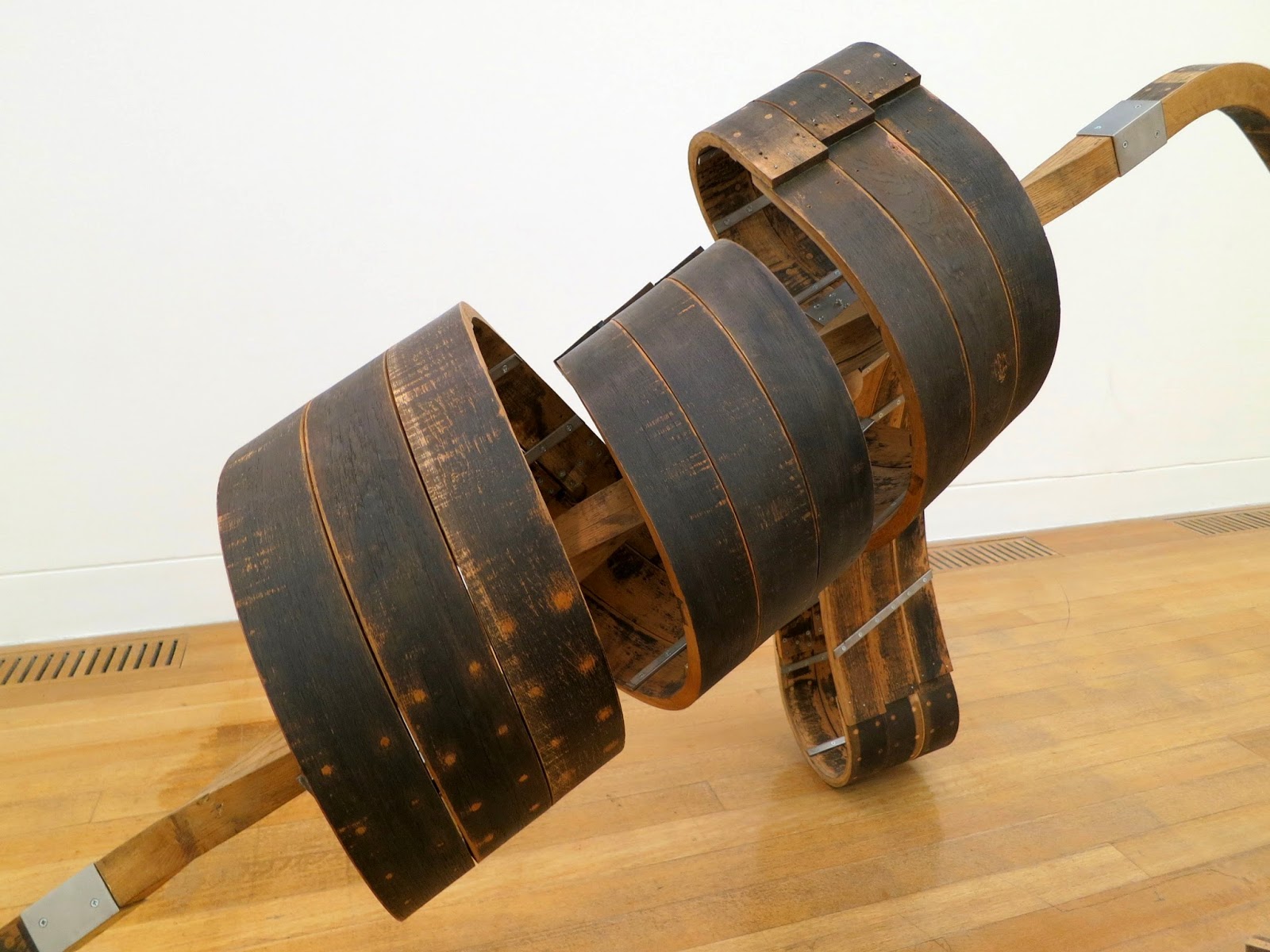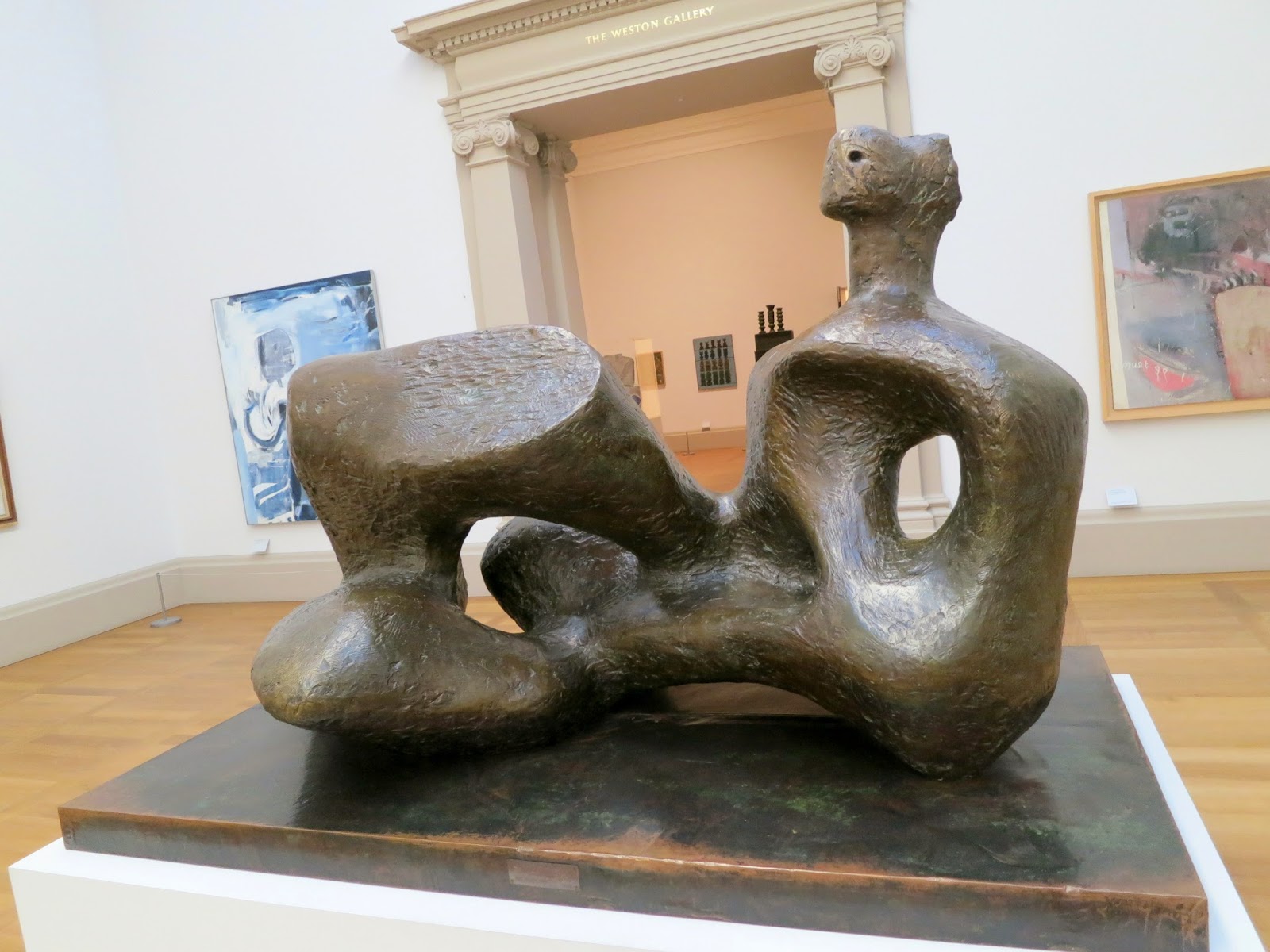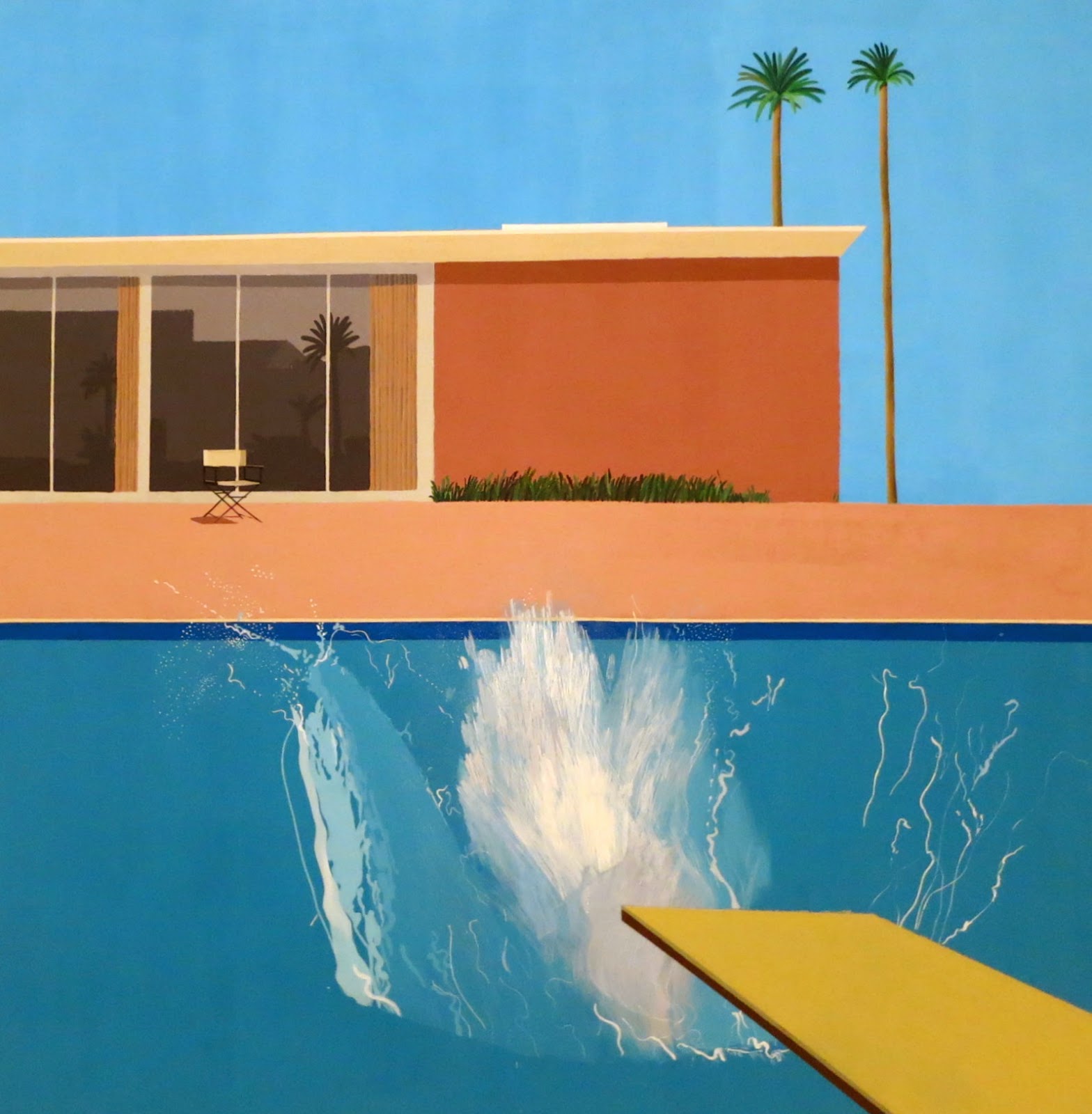Richard Deacon, at Tate Britain.
Richard Deacon is known for his open forms and his interest in materials and their manipulation. His sculptures explore the interface between interior and exterior, surface and edge, form and image. He combines organic forms with elements of engineering, employing materials ranging from laminated wood and polycarbonate to leather, cloth and ceramic. He refers to himself as a fabricator to distinguish his working methods from those of the carver and modeller and his work is indeed not constructed in the manner of traditional sculpture, but instead it's built up from many parts into a complex form, constructed with precision. His work does not look like anything else.
Intrigued by the process of sculpture, he is happy for people to make of the result what they will: 'I don't think there is ever someone who 'gets it'. I don't get it particularly.... I hope people get pleasure from the work'.
Struck Dumb, 1988
Struck Dumb was made at Govan Shipbuilders in Glasgow.
Art for Other People, no. 12, 1984 (marble and leather)
This series began in 1982 and was intended for domestic spaces.
Art for Other People. No. 6, 1983, (suede and brass)
After, 1998 (wood, stainless steel, aluminium and resin)
Constructed from multiple smaller components, a balance between volume and shape, this piece is neither carved nor modelled in the manner of traditional sculpture, but instead, methodically built up from many parts. The wooden tubes are sections of the same curve; their change of angle from one section to the next gives the work a dynamic, writhing quality. The woven stainless steel straps linking the ends, draws them together.
looking closer

Two by Two, 2010, (galvanised and stainless steel)
Our of Order, 2003 (oak and stainless steel)
Ribbons of steamed oak, arranged in such a way that they twist and corkscrew on the gallery floor.
a different view

looking closer
looking closer
and again.
I did not manage to get the titles for the sculptures below:






















































